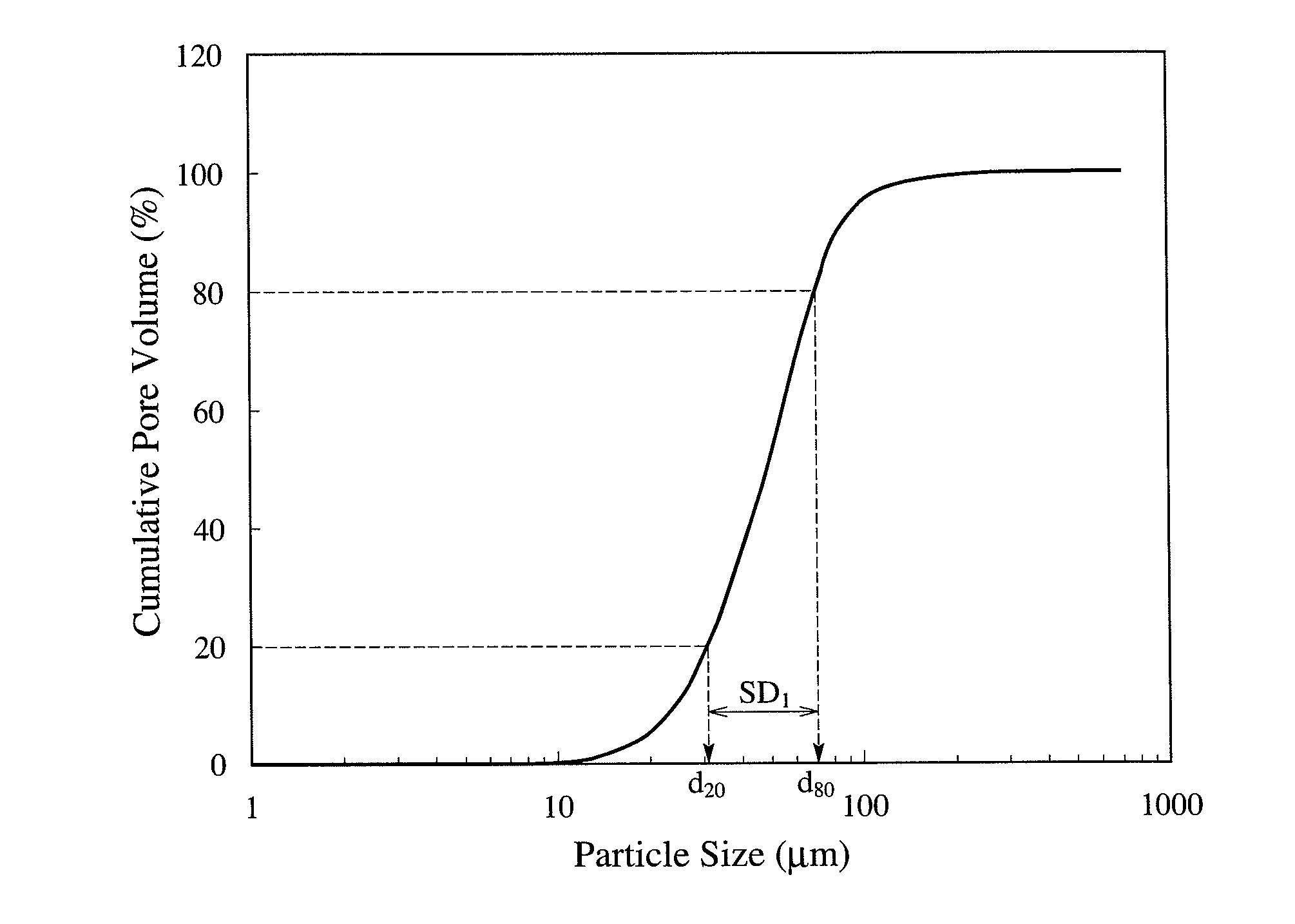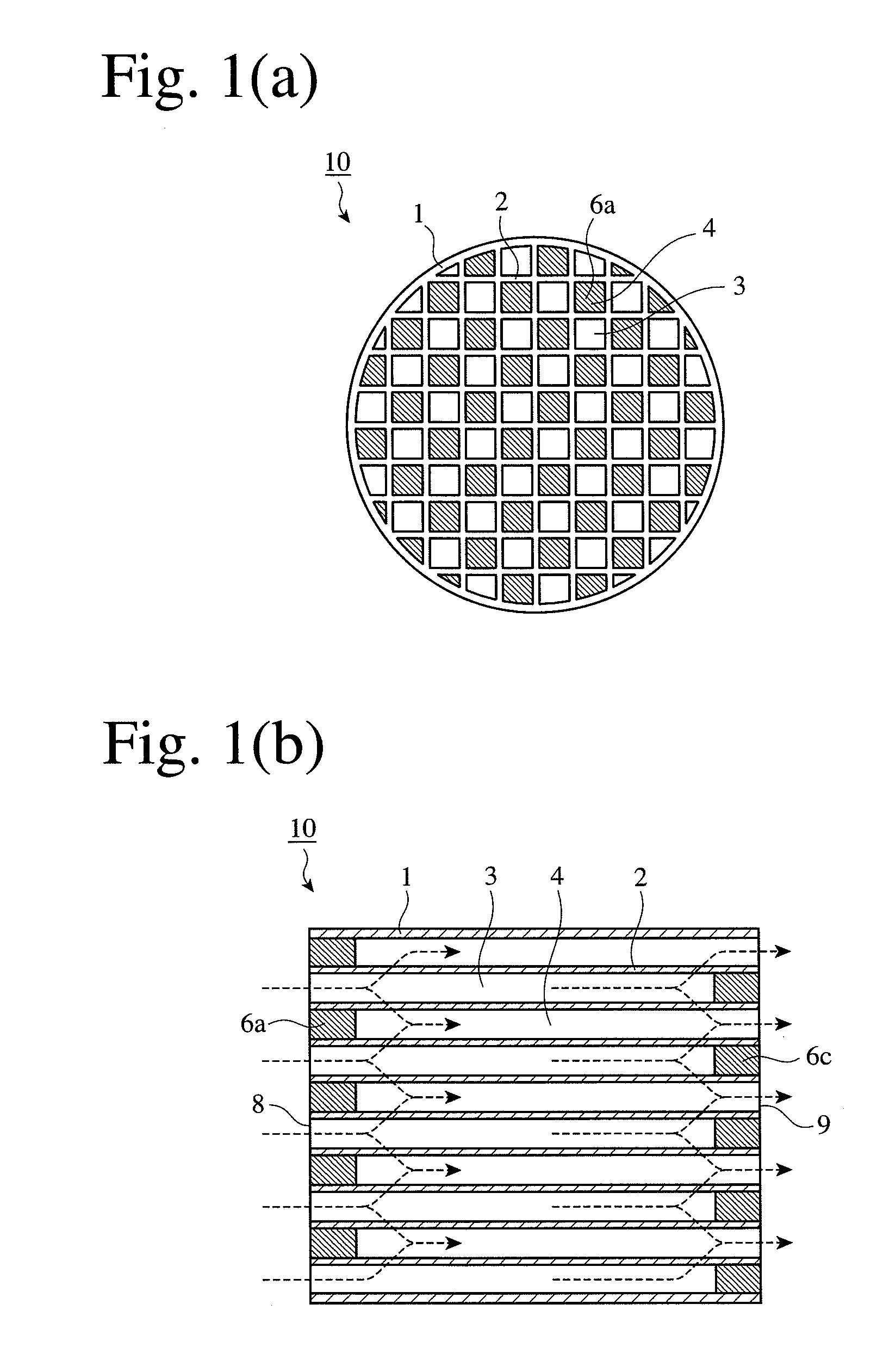Cordierite-based ceramic honeycomb filter and its production method
a technology of cordierite and ceramics, applied in the direction of combination devices, machines/engines, domestic applications, etc., can solve the problems of large pressure loss, short capture time, and high production cost, and achieve the effect of improving strength and low pressure loss
- Summary
- Abstract
- Description
- Claims
- Application Information
AI Technical Summary
Benefits of technology
Problems solved by technology
Method used
Image
Examples
example 1
[0063]Starting material powders comprising pulverized amorphous silica (particle size distribution deviation SD1=0.45, mode diameter M50=30.5 μm, the percentage of particles of 200 μm or more=0.9%, the percentage of particles of 100 μm or more=4.0%, the percentage of particles of 20 μm or less=8.5%, roundness=0.4, and containing 0.005% by mass of CaO+Na2O+K2O as impurities), kaolin (average particle size=3.0 μm, and containing 0.32% by mass of CaO+Na2O+K2O as impurities), talc (average particle size=12 μm, and containing 0.5% by mass of CaO+Na2O+K2O as impurities), alumina (average particle size=4.2 μm, and containing 0.3% by mass of CaO+Na2O+K2O as impurities), aluminum hydroxide (average particle size=1.8 μm, and containing 0.05% by mass of CaO+Na2O+K2O as impurities) were mixed in the amounts shown in Table 1, to form a cordierite-forming material powder. This cordierite-forming material powder was dry-mixed with a pore-forming material of a foamed resin having a particle size di...
examples 8-17
, and Comparative Examples 1-4 and 8
[0066]Using spherical, amorphous silica powder obtained by ejecting finely pulverized, high-purity, natural silica stones into high-temperature flame, whose particle characteristics are shown in Table 1, in the amount shown in Table 1, two ceramic honeycomb structures of 267 mm in outer diameter, 304 mm in length, 1.57 mm in cell wall pitch and 0.3 mm in cell wall thickness were produced in each of Examples 8-17 and Comparative Examples 1-4 and 8, in the same manner as in Example 1 except for changing the amounts of talc powder, silica powder, kaolin powder, alumina powder and aluminum hydroxide powder, and the particle characteristics and amount of the pore-forming material as shown in Table 1. The particle size distribution of silica used in Example 11 is shown in FIG. 4.
[0067]The flow path ends of each ceramic honeycomb structure were alternately plugged with a plugging slurry comprising a cordierite-forming material, dried and sintered to prod...
PUM
| Property | Measurement | Unit |
|---|---|---|
| pore size distribution | aaaaa | aaaaa |
| pore size | aaaaa | aaaaa |
| porosity | aaaaa | aaaaa |
Abstract
Description
Claims
Application Information
 Login to View More
Login to View More - R&D
- Intellectual Property
- Life Sciences
- Materials
- Tech Scout
- Unparalleled Data Quality
- Higher Quality Content
- 60% Fewer Hallucinations
Browse by: Latest US Patents, China's latest patents, Technical Efficacy Thesaurus, Application Domain, Technology Topic, Popular Technical Reports.
© 2025 PatSnap. All rights reserved.Legal|Privacy policy|Modern Slavery Act Transparency Statement|Sitemap|About US| Contact US: help@patsnap.com



